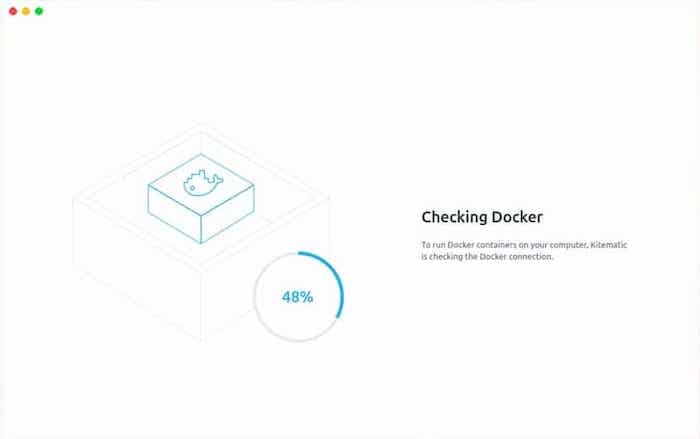How To Install Kitematic on Ubuntu 24.04 LTS

Managing Docker containers through command-line interfaces can be intimidating for newcomers and time-consuming for experienced developers. Kitematic transforms this experience by providing an intuitive graphical user interface that simplifies Docker container management on Ubuntu systems.
This comprehensive guide will walk you through installing Kitematic on Ubuntu 24.04 LTS, ensuring you can harness the full power of containerization without the complexity of command-line operations. Whether you’re a system administrator, developer, or DevOps engineer, this tutorial provides everything needed to get Kitematic running smoothly on your Ubuntu system.
Understanding Kitematic and Its Benefits
What is Kitematic?
Kitematic is an open-source Docker GUI application developed by Docker Inc. that provides a visual interface for managing Docker containers. This powerful tool bridges the gap between complex command-line operations and user-friendly container management, making Docker accessible to users of all skill levels.
The application offers cross-platform compatibility, running seamlessly on Linux, macOS, and Windows systems. Kitematic integrates directly with Docker Hub registry, allowing users to search, download, and deploy containers with just a few clicks.
Key Features and Advantages
Kitematic simplifies Docker container management through several compelling features. The automated Docker installation and setup process eliminates manual configuration headaches. Users benefit from an intuitive container management interface that displays running containers, their status, and resource usage in real-time.
Port management becomes effortless with Kitematic’s visual port mapping tools. Volume configuration and environment variable management are handled through simple forms rather than complex command-line parameters. The application also provides integrated log streaming and direct terminal access to containers.
Use Cases and When to Choose Kitematic
Kitematic excels in educational environments where students are learning containerization concepts. Developers working on rapid prototyping projects find the visual interface accelerates their workflow significantly. The tool is particularly valuable for teams transitioning from traditional virtualization to containerized deployments.
Prerequisites and System Requirements
System Requirements
Before installing Kitematic on Ubuntu 24.04 LTS, ensure your system meets the minimum requirements. Your Ubuntu installation should be fresh and fully updated to prevent compatibility issues. The system requires at least 4GB of RAM, though 8GB is recommended for optimal performance.
An active internet connection is essential for downloading Docker images and Kitematic packages. Administrative (sudo) privileges are required throughout the installation process. Ensure adequate disk space is available, as Docker images can consume significant storage.
Required Software Dependencies
Several software packages must be installed before Kitematic installation. The curl utility enables downloading files from remote repositories. The apt-transport-https package allows secure connections to Docker repositories. Certificate authorities (ca-certificates) ensure secure communications during installation.
The unzip utility is necessary for extracting Kitematic installation archives. Basic Linux command-line knowledge helps troubleshoot potential issues during installation. Docker Engine serves as the foundation for Kitematic operation.
Installing Docker on Ubuntu 24.04
Updating System Packages
Begin by updating your Ubuntu system to ensure all packages are current. This step prevents compatibility issues and security vulnerabilities:
sudo apt update
sudo apt upgrade -yInstall essential dependencies required for Docker installation:
sudo apt install apt-transport-https ca-certificates curl gnupg lsb-release unzip -yAdding Docker Repository
Docker’s official repository provides the most recent stable releases. Add the Docker GPG key to your system’s keyring for package verification:
curl -fsSL https://download.docker.com/linux/ubuntu/gpg | sudo gpg --dearmor -o /usr/share/keyrings/docker-archive-keyring.gpgAdd the official Docker APT repository to your system’s sources list:
echo "deb [arch=$(dpkg --print-architecture) signed-by=/usr/share/keyrings/docker-archive-keyring.gpg] https://download.docker.com/linux/ubuntu $(lsb_release -cs) stable" | sudo tee /etc/apt/sources.list.d/docker.list > /dev/nullUpdate the package index to include the newly added repository:
sudo apt updateInstalling Docker Engine
Install Docker Community Edition along with essential components:
sudo apt install docker-ce docker-ce-cli containerd.io -yStart the Docker service and enable it to launch automatically at boot:
sudo systemctl start docker
sudo systemctl enable dockerVerify Docker installation by running the hello-world container:
sudo docker run hello-worldConfiguring Docker User Permissions
By default, Docker requires root privileges for all operations. Add your user account to the docker group to avoid using sudo with every Docker command:
sudo groupadd docker
sudo usermod -aG docker $USERApply the group membership changes immediately:
newgrp dockerVerify your user’s group membership:
groupsTest Docker access without sudo privileges:
docker run hello-worldDownloading and Installing Kitematic
Downloading Kitematic from GitHub
Navigate to the official Kitematic releases page on GitHub to download the latest version. Use wget to download the Ubuntu-specific package:
cd ~/Downloads
wget https://github.com/docker/kitematic/releases/download/v0.17.13/Kitematic-0.17.13-Ubuntu.zipAlternatively, you can use curl if wget is unavailable:
curl -L https://github.com/docker/kitematic/releases/download/v0.17.13/Kitematic-0.17.13-Ubuntu.zip -o Kitematic-0.17.13-Ubuntu.zipExtracting the Installation Package
Extract the downloaded ZIP archive using the unzip utility:
unzip Kitematic-0.17.13-Ubuntu.zipList the extracted contents to locate the Debian package file:
ls -la Kitematic*The extraction should reveal a .deb package file suitable for Ubuntu installation.
Installing the Debian Package
Install the Kitematic Debian package using dpkg:
sudo dpkg -i Kitematic-0.17.13_amd64.debIf dependency issues arise during installation, resolve them using apt:
sudo apt install -fRetry the Kitematic installation after resolving dependencies:
sudo dpkg -i Kitematic-0.17.13_amd64.debPost-Installation Configuration
Verify that the Docker service is running and accessible:
sudo systemctl status dockerConfirm your user has proper Docker group permissions by running a test container:
docker psIf Kitematic installation completed successfully, the application should be available in your system’s application menu.
Launching and Initial Setup
Starting Kitematic
Launch Kitematic from the Applications menu by searching for “Kitematic” in the activities overview. Alternatively, start the application from the terminal:
kitematicThe initial startup sequence may take several moments as Kitematic establishes connections with Docker services and initializes its interface.

Docker Hub Integration Setup
Upon first launch, Kitematic prompts for Docker Hub account credentials. Create a Docker Hub account if you don’t have one, as it provides access to thousands of pre-built container images.
Sign in using your Docker Hub username and password. This integration enables Kitematic to display curated images and simplifies the container deployment process. The application automatically configures registry access and populates the interface with popular container images.
Using Kitematic Interface
Main Interface Overview
Kitematic’s dashboard provides a clean, organized view of your container environment. The left sidebar lists all containers currently managed by Kitematic, displaying their status, names, and basic information.
The main panel shows detailed information about selected containers, including resource usage, port mappings, and environment variables. Navigation tabs allow quick access to logs, settings, and terminal interfaces.
Container Management Operations
Creating new containers from Docker Hub images requires only a few clicks. Search for desired images using the integrated search functionality, then click “Create” to deploy containers instantly.
Starting, stopping, and restarting containers is accomplished through intuitive controls in the container list. The interface provides real-time status updates and visual indicators for container health. Deleting unnecessary containers helps maintain a clean working environment and conserves system resources.
Advanced Features
Kitematic simplifies complex Docker configurations through its visual interface. Port mapping configuration allows exposure of container services to the host system without command-line complexity.
Volume management enables persistent data storage and file sharing between containers and the host system. Environment variable configuration supports application customization and deployment flexibility. Terminal access provides direct command-line interaction with running containers when needed.
Troubleshooting Common Issues
Docker Permission Problems
Permission-related errors are common during initial setup. If you encounter “permission denied” errors, verify your user’s membership in the docker group:
groups $USERIf the docker group is missing, add your user manually:
sudo usermod -aG docker $USERLog out and back in to apply group membership changes, or use the newgrp command:
newgrp dockerInstallation and Dependencies Issues
Broken package dependencies can prevent successful Kitematic installation. Use apt’s fix-broken packages option to resolve dependency conflicts:
sudo apt install -fIf specific packages are missing, install them manually before retrying Kitematic installation. Check system compatibility if installation fails repeatedly, as older Ubuntu versions may require different approaches.
Kitematic Connection Problems
Docker daemon connection failures prevent Kitematic from functioning properly. Ensure the Docker service is running:
sudo systemctl status dockerStart the Docker service if it’s inactive:
sudo systemctl start dockerNetwork connectivity issues can interfere with Docker Hub integration. Verify internet connectivity and check firewall settings if image downloads fail.
Best Practices and Security Considerations
Security Best Practices
Running containers with appropriate user permissions enhances system security. Avoid running containers as root unless absolutely necessary. Configure resource limits to prevent containers from consuming excessive system resources.
Regularly update Docker and Kitematic to receive security patches and bug fixes. Monitor container activity through Kitematic’s logging features to identify potential security issues. Remove unused containers and images to minimize attack surfaces.
Performance Optimization
Allocate system resources appropriately based on container requirements. Monitor container performance through Kitematic’s resource usage displays. Implement cleanup procedures to remove unused images and containers that consume valuable disk space.
Configure automatic restart policies for critical containers to ensure service availability. Use multi-stage builds for custom images to reduce final image sizes and improve deployment speed.
Alternative Installation Methods
Installing from Ubuntu Repositories
Some Ubuntu versions include Kitematic in their official repositories, though these versions may be outdated. Check repository availability:
apt search kitematicInstall from repositories if available:
sudo apt install kitematicCompare installed versions with GitHub releases to determine if manual installation provides newer features.
Building from Source
Advanced users can compile Kitematic from source code for the latest features and customizations. This approach requires development tools and dependencies:
sudo apt install build-essential nodejs npm gitClone the Kitematic repository and follow build instructions in the project documentation. Building from source enables contribution to the open-source project and customization for specific use cases.
Congratulations! You have successfully installed Kitematic. Thanks for using this tutorial for installing the Kitematic on the Ubuntu 24.04 LTS system. For additional help or useful information, we recommend you check the official Kitematic website.